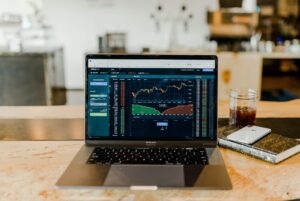Demystifying Data Science: Unleashing the Power of Insights
Data Science has emerged as a transformative discipline, revolutionizing industries across the globe. With the proliferation of digital technologies and the exponential growth of data, organizations are turning to data scientists to unlock the hidden patterns, gain actionable insights, and make informed decisions. At its core, data science is a multidisciplinary field that combines statistical analysis, computer science, and domain knowledge to extract meaningful information from complex datasets. In this article, we delve into the essence of data science, exploring its key components, methodologies, and real-world applications, shedding light on how this dynamic field fuels innovation and empowers businesses in the age of information.

The Field of Data Science: An Overview
Data science is an interdisciplinary field that utilizes scientific methods, algorithms, and tools to extract knowledge and insights from structured and unstructured data. It encompasses a wide range of techniques and approaches, including data exploration, statistical modeling, machine learning, and data visualization. By leveraging these methodologies, data scientists are able to uncover patterns, identify trends, and extract valuable insights that drive strategic decision-making.
The Three Pillars of Data Science
Data science relies on three fundamental pillars: mathematics and statistics, computer science and programming, and domain knowledge. Each of these pillars plays a crucial role in the data science workflow.
- Mathematics and Statistics: Data science heavily draws upon mathematical and statistical principles to understand and model complex data. Concepts such as probability theory, linear algebra, calculus, and statistical inference provide the foundation for data analysis, hypothesis testing, and predictive modeling.
- Computer Science and Programming: Proficiency in programming languages such as Python, R, and SQL is essential for data scientists. They use programming to manipulate, clean, and transform raw data, as well as to build and implement sophisticated algorithms and machine learning models. Additionally, knowledge of data structures, algorithms, and software engineering principles enables data scientists to develop scalable and efficient solutions.
- Domain Knowledge: Data scientists need to possess a solid understanding of the specific industry or domain they are working in. This domain knowledge helps them contextualize the data, identify relevant features, and develop models that align with the business objectives. Whether it’s healthcare, finance, marketing, or any other field, domain expertise is invaluable for generating actionable insights.
The Data Science Workflow
Data science projects typically follow a standardized workflow, encompassing several stages:
- Problem Formulation: Identifying the business problem or question that data analysis aims to solve or answer.
- Data Collection and Preparation: Gathering relevant data from various sources, cleaning and transforming it into a suitable format for analysis.
- Exploratory Data Analysis (EDA): Conducting initial exploratory analysis to understand the data’s characteristics, detect outliers, and uncover patterns.
- Feature Engineering: Selecting or creating informative features that capture the essence of the data and improve model performance.
- Modeling: Applying statistical modeling and machine learning techniques to train and fine-tune predictive models that solve the defined problem.
- Evaluation and Validation: Assessing the model’s performance using appropriate evaluation metrics and validating it against unseen data.
- Deployment and Monitoring: Implementing the model in a production environment and monitoring its performance and impact on business outcomes.
Real-World Applications of Data Science
Data science finds application in numerous fields, bringing valuable insights and driving innovation. Some notable examples include:
- Healthcare: Data science aids in disease prediction, drug discovery, personalized medicine, and optimizing healthcare delivery systems.
- Finance: Financial institutions leverage data science for fraud detection, risk assessment, algorithmic trading, and portfolio optimization.
- Marketing and Customer Analytics: Data science enables businesses to understand customer behavior, personalize marketing campaigns, and optimize pricing strategies.
- Transportation and Logistics: Data science optimizes route planning, supply chain management, demand forecasting, and fleet management.
- Social Sciences: Data science is used in social research, sentiment analysis, opinion mining, and predicting human behavior.
The Future of Data Science
As the volume and complexity of data continue to grow, the demand for skilled data scientists will escalate. Moreover, emerging technologies such as artificial intelligence (AI), machine learning, and deep learning will further shape the future of data science, enabling more sophisticated analysis, automation, and decision-making.
Conclusion
In conclusion, data science is a powerful discipline that harnesses the potential of data to drive insights and create value. By combining statistical analysis, computer science, and domain expertise, data scientists possess the tools to unlock the hidden patterns in data, transforming organizations and driving innovation across industries. As we navigate the age of information, data science remains at the forefront of shaping a data-driven future.
Listings related to article "Demystifying Data Science: Unleashing the Power of Insights"
Top-Rated Computer and Mac Repair Services in Miami
Looking for reliable computer and Mac repair services in Miami? Our experienced technicians offer quick, professional solutions for all kinds of devices—including laptops, desktops, iMacs, MacBooks, and more. Whether you’re facing hardware failures, software glitches, system crashes, or need an upgrade, we’re here to help.
- Category
- Computers » Hardware » Support and Services
More articles like "Demystifying Data Science: Unleashing the Power of Insights"
Using a Television as a Desktop Monitor: Possibilities and Procedures
In an era where technology seamlessly intertwines different aspects of our lives, the lines between devices are often blurred. One such question that frequently arises is whether a television can be used as a desktop monitor. The short answer is yes, it is indeed possible to use a television as a desktop monitor, and this […]
WarGames (1983): The Classic Tale of High-Tech Thrills and Ethical Dilemmas
Released in 1983, “WarGames” is a sci-fi thriller that has left an indelible mark on the world of cinema and popular culture. Directed by John Badham and starring Matthew Broderick and Ally Sheedy, the film delves into the dangerous interplay between artificial intelligence, nuclear warfare, and the ethical dilemmas that come with modern technology. Set […]
The Rise of AI in Stock Trading: Enhancing Strategies with Artificial Intelligence
The world of stock trading has been revolutionized by the integration of artificial intelligence (AI) technology. Gone are the days of relying solely on human intuition and manual analysis to make investment decisions. Today, AI-driven algorithms and machine learning models are taking center stage, providing traders with powerful tools to analyze vast amounts of data, […]






